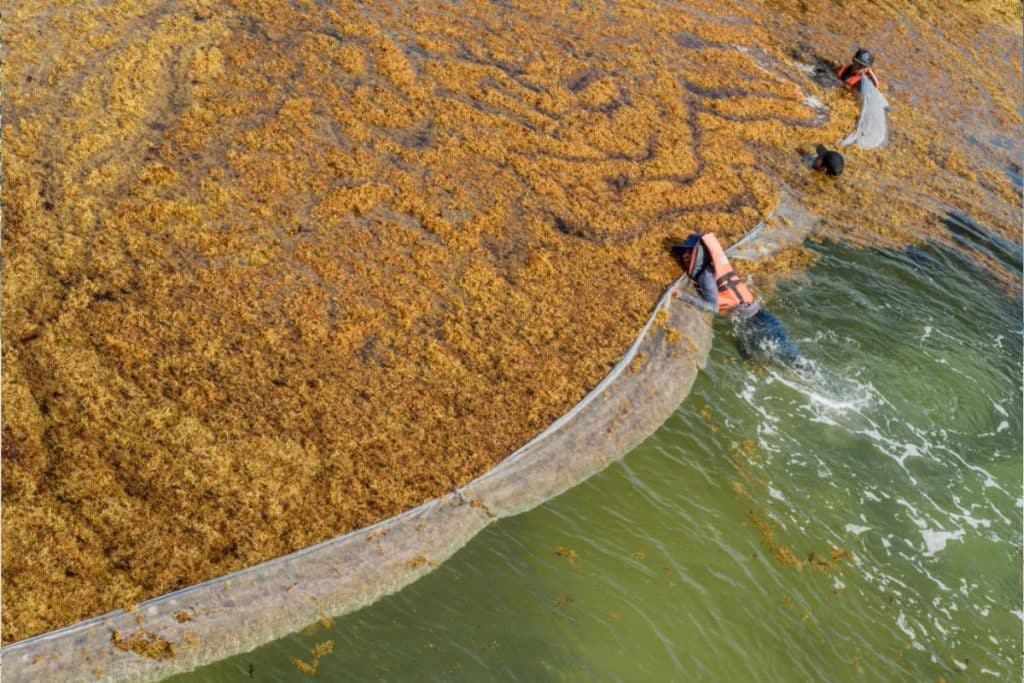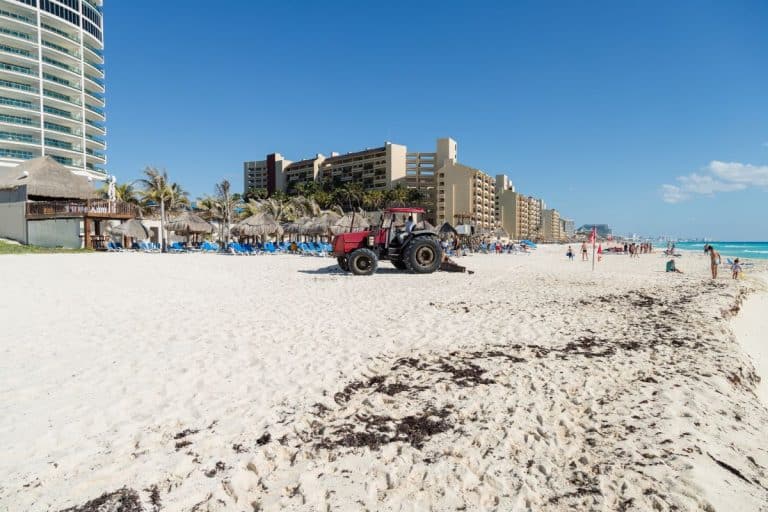According to a report from the Department of the Navy of Quintana Roo (Semar), the beaches of Cancun will be less covered by Sargassum seaweed starting next week.
After investigating the entire region from the base of Isla Mujeres, Semar determined that the number of algae in Cancun will decrease soon.
The investigation was conducted as part of a partnership with the Gulf and Caribbean Oceanographic Institute to determine how much total sargassum would arrive in the Mexican Caribbean.
Isla Mujeres, Puerto Morelos and Othon P. Blanco often have the lowest concentrations of sargassum in the region, with the highest concentrations being found near the popular beaches of Solidaridad, Cozumel and Tulum.
The 60 thousand tons of sargassum that floated across the ocean in May were enough to keep people from going to the beach. This was the largest amount of sargassum in Cancun this year. A slight decrease was initially noted toward the end of August when hoteliers and tourists alike noticed that popular beaches were sargassum-free for longer than normal.

During the worst periods of sargassum, many people came to the nearby island of Holbox to relax on the pristine, algae-free white sand beaches. Since there is no invasive algae here, other tourists often travel to the nearby cenotes. These also offer many of the same amenities as beaches, such as swimming and snorkeling.
For those who chose to stay in Cancun and the surrounding areas, few beaches were available because most of the beaches in the hotel zone were infested with troublesome brown algae.
Semar also acknowledged that the work of sargassum cleaners employed by numerous cities in the state of Quintana Roo will be necessary to reduce the number of invasive algae.
Naval forces also helped eradicate Sargassum by erecting barriers and collecting seaweed aboard coastal ships. This year alone, cleaners and collectors were able to remove approximately 46 thousand tons of sargassum from Cancun’s beaches.
Despite the reduction in sargassum expected this week, Semar has stated that there may be a flare-up in the coming months, but that removal will be quick and efficient:
“It is important to mention that some repeats may occur… as part of the variations in wind speed and the Yucatan current, coupled with the presence of hydrometeorological events.”

